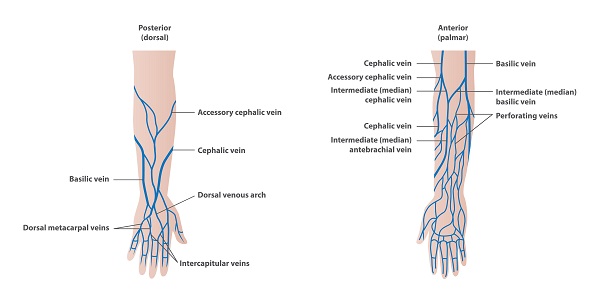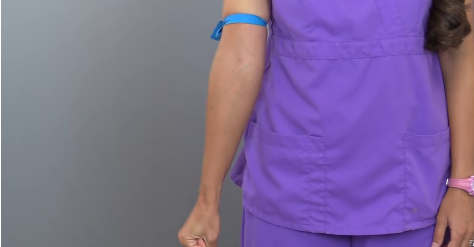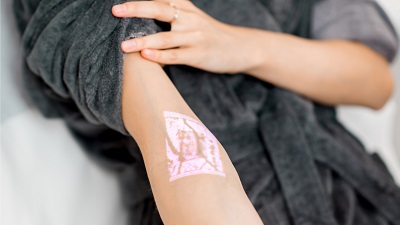Is There a Easy Way to Find a Vein for Iv
What if you can't find veins on a patient, yet you need to start an IV, draw blood, or perform other venipuncture procedures? This happens more often than you'd think, and even seasoned nurses struggle to find veins in patients who are obese, dehydrated, or suffering from advanced renal or heart disease.
Luckily, there are some things you can do to increases your chances of sticking one of those hard-to-find veins.
*Disclaimer: Before you start, always remember to follow the latest protocols and best practices for your area.
How to Find Veins in Patients
First, it's important to keep in mind that your patient will likely have a vein to stick. I've had many patients tell me that they are impossible to stick, yet I've been able to successfully hit their vein. Nevertheless, there will be times when you can't easily find a vein, and you must resort to other tactics.
Tip #1: Use Palpation to Find Difficult Veins, not Sight
When you have healthy patients, those veins are popping out and very easy to see. However, when your patient isn't so healthy, you'll have to rely on palpation to find those difficult veins.
This is where it becomes very important to have those vein locations memorized. While there can be variations in the anatomy of your patients, the vein locations should be consistent.

Next, you'll have to learn through experience what a vein actually feels like as you palpate the arm. I learned this by practicing on myself. I'd apply a tourniquet to my arm and then feel around the front and back.
Veins have a very unique feel to them. They are squishy yet bouncy. I can still remember trying to palpate when I was a new nurse, and I'd ask my preceptor, "Is this a vein?" She'd respond, "No, that's just a ligament (or tendon)."
By practicing on yourself (and other healthy people with good veins), you'll become familiar with the feel of a vein. This will enable you to start IVs by palpation, rather than by sight.
Tip #2: Use Gravity and a Tourniquet
If you still can't find veins by palpation, you can always use gravity and a tourniquet to help the veins become engorged and visible. Veins are very much like your typical water hose: if you kink the hose, what happens? Pressure builds up, and the hose expands.
Veins operate in a similar way. If you apply a tourniquet and have the patient hold their arm down and tighten or pump their fist, the veins will become engorged and more visible, which will increase your chances of finding a vein to stick.

However, keep in mind that this technique can't always be used, especially in cases where the patient is having blood drawn for sensitive lab work, as fist pumping can alter blood levels of potassium and other things. Nevertheless, you'd be surprised at how effective this can be in finding veins.
Tip #3: Use Vein Finders or Vein Lights
In my experience, the first two methods mentioned above (palpation and tourniquet / gravity) will help you find veins in the majority of your patients. Nevertheless, sometimes you have to take it a step further and use another method.
Vein finders often use infrared light to detect veins in the arm, while vein lights help to illuminate the skin to reveal hidden veins. These can be helpful in situations where you can't use the tourniquet and hand pumping technique.

Tip #4: Use Ultrasound to Find Veins
If you don't have a vein finder or vein light, ultrasound techniques can also be used to discover veins. One time I had a patient who thought that they'd have to have a central line before the stress test, because they felt that I'd be unable to find a good vein to stick.
Central lines can be very expensive and lead to an increased risk of infection. Therefore, I consulted with ultrasound, and I was able to find a vein to stick, which saved the patient from the cost and risk of having a central line placed for the procedure.

Nevertheless, if you do have a patient who will be admitted for extra procedures, a central line might make sense. You can always consult with the physician to see if the patient is a good candidate for a central line.
And finally, some nurses use hot compresses to help the veins become engorged. I have never used this method myself, but some nurses prefer this method.
Source: https://www.registerednursern.com/hard-find-veins/
0 Response to "Is There a Easy Way to Find a Vein for Iv"
Post a Comment